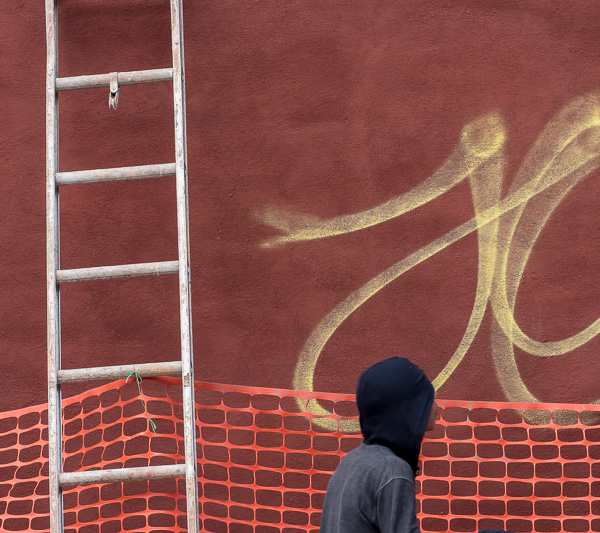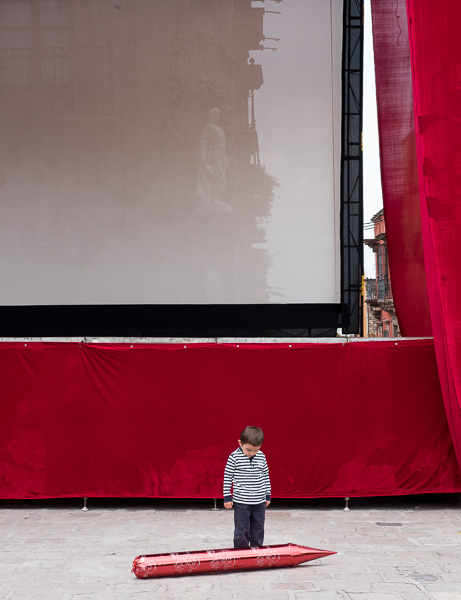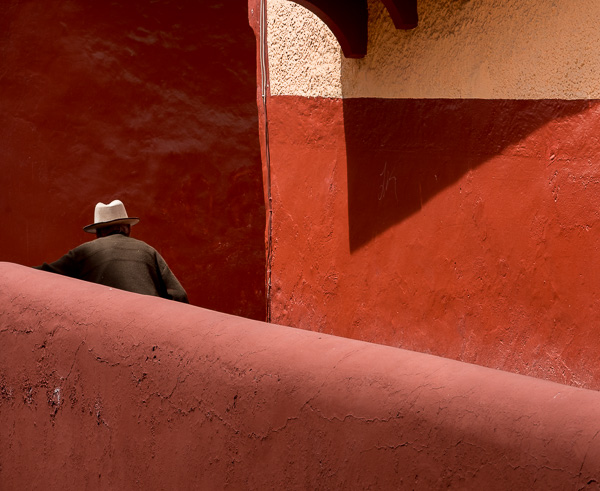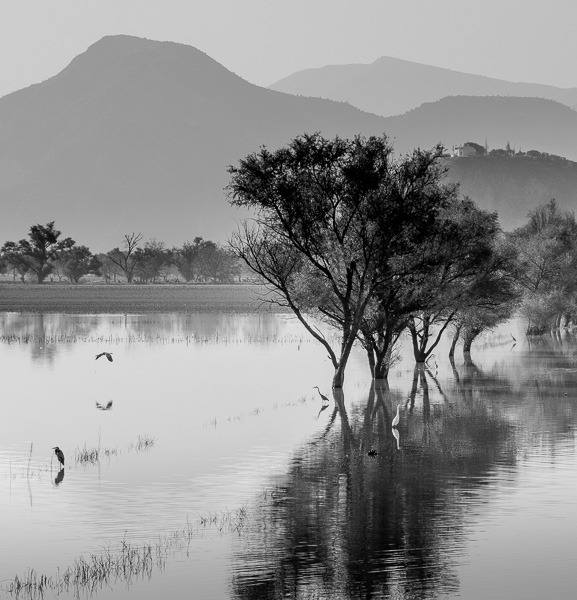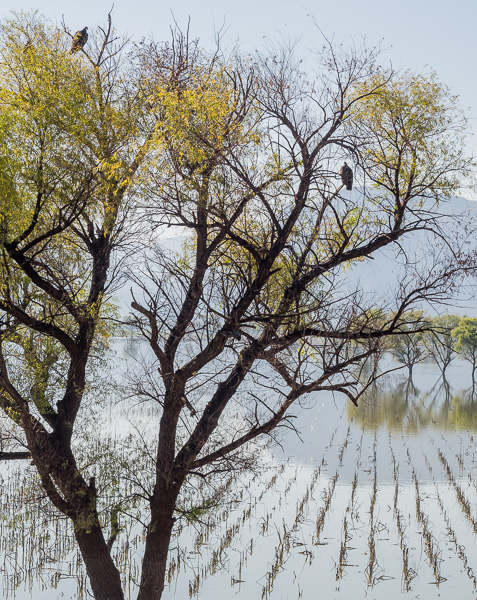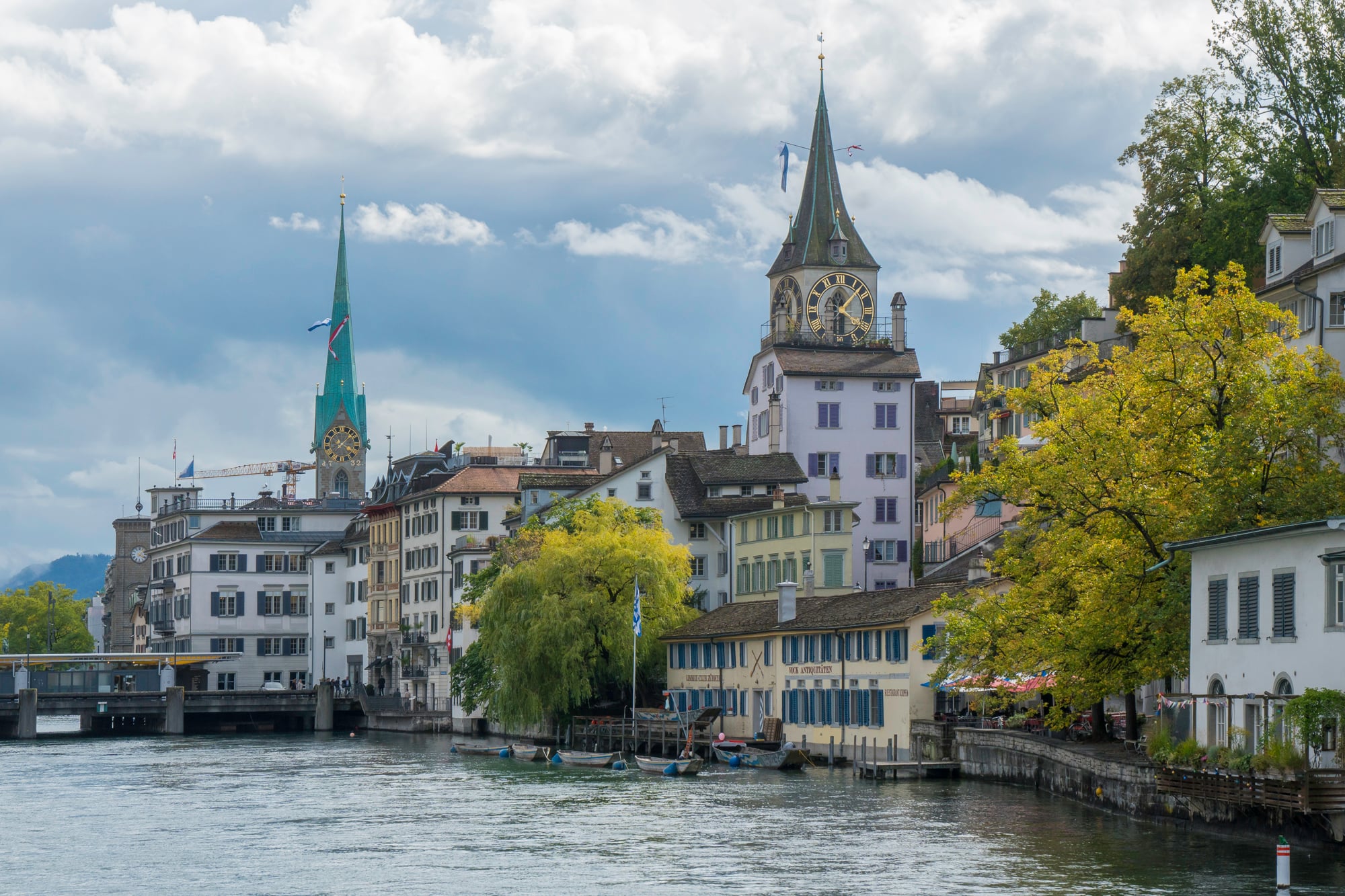
Giraffe Beetle, Madagascar
A tiny denizen of the Eastern Rainforest
I hear some things can’t be shot with medium format. Wildlife moves too quickly, the equipment weighs to much for wilderness travel, ISOs are too low for aerials, and no sane person would try to use one for street photography. It ain’t necessarily so, but perhaps they’re right about the last one.
For years I shot with medium format film camera, starting with a Pentax 67, moving to a Pentax 645, finally settling on a Mamiya 7 rangefinder, a wonderful camera for the wilderness travel I used to shoot several books. I learned how to compensate for limitations inherent in the format, some still present in the current digital models.
In the film days, larger format produced higher resolution images. Now digital medium format advanced resolution even more. Simply removing the anti-alias filter, in place to suppress moiré, doubles apparent sharpness. Exposure latitude surpasses 35mm systems. With rare exceptions, medium format glass is sharper, especially at the corners of wide-angles.
Since obtaining a Phase One P45+ system, I’ve used it in Madagascar, shot religious festivals in Singapore and India, handheld it on aerial shoots, and hauled it around the mountains of the Pacific Northwest. I concede that the equipment is relatively slow to operate and heavy enough that I canceled my gym membership while setting up a payment plan with my chiropractor, but whatever the challenges, the seductive resolution of the images I nail compels me to pack it every time.
Twenty years ago I used to hike into the North Cascades carrying a pack stuffed with a week’s worth of food, camping gear, ropes, climbing equipment, and a seriously heavy Pentax 67 kit. As my aching joints and feet can testify, digital didn’t help medium format shed pounds, but it reinforced my addiction to larger formats. I always lusted after 4×5 quality but couldn’t face the bulk and agonizingly slow pace it demanded. Medium format extracts equivalent quality in a much smaller and slicker package. Time to stock up on ibuprofen.
When I left for my fifth trip to Madagascar as a guide for Joseph Van Os Photo Safaris. I was determined to return with a few extraordinary images. With immobile objects such as a grove of baobab trees or the tangle of the spiny forest, there wasn’t much difference between the Phase system and a 35mm rig, but animals were more challenging. There was no way to capture skipping sifaka lemurs using autofocus; the system was too slow. Super telephotos are absurdly heavy, and mirror slap would blur the image at slower shutter speeds. I had to go old school, getting close and either focusing manually or, anticipating where the animal would go, focus on that spot and wait for the critical moment. I was back in 1990, but the old techniques still worked.
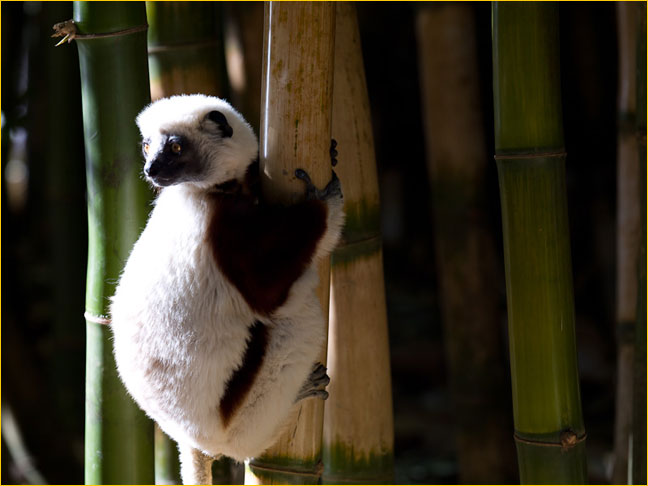
Sifaka Lemur, Madagascar
Sifakas are found the in the arid south and west of the island
Madagascar teems with bizarre insects such as the giraffe beetle. Our local guide spotted one perched on a swaying leaf in the Eastern Rainforest. Up close, it’s revealed as a terrifying scarlet beast with its long, articulating neck supporting a face that could have sprung from H.R. Giger’s imagination. Thankfully, the animal is only a thumbnail’s length. I carefully attached a clamp to my tripod and the leaf’s stem to stop the motion and shot it with a 120 macro. With available light, I achieved barely acceptable depth of field, but the strange creature didn’t spook. I could understand why J.B.S. Haldane responded as he did when asked what he could divine about God from his study of the natural world. “An inordinate fondness for beetles.”
Todd Burleson owner of Alpine Ascents, a mountaineering guide service, was the first man to climb each of the Seven Summits at least twice, ie the 14 peaks taller than 8,000 meters. He invited me to fly around Mt. Rainier on a perfect spring afternoon in his recently restored Beaver, and I jumped at the chance. It was a calm day, but the plane still bounced as I shot at 14,000 feet. Even in bright light I needed a high ISO to reach 1/800 th of a second required to stop camera shake. When I got home, I color corrected the image and without bothering to work on the noise, had a close look. I was astonished to see footprints near the summit. Not only that, I could see where the climbing rope had slid, forming a faint trough in the snow.

Mt Rainier Aerial
The Kautz Glacier route ascends the center of the south face
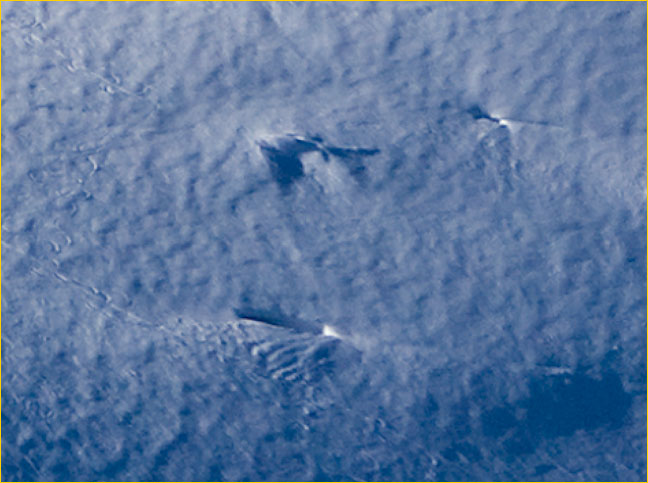
Mt Rainier Summit Detail
Footprints and rope groove are visible near the summit
Street shooting in India is a masochist’s game. A walk down an alley in old Dehli resembles a rugby scrum, elbows and shoulders buffeting you and knocking your tripod at exactly the wrong moment. With camera gear worth the net annual income of a city block, security is a concern. Compound this chaos by orders of magnitude to visualize shooting during a large religious festival. I traveled to Haridwar for the tri-annual Kumbh Mela, the largest assemblage of humans on the planet. Millions funneled through the town over several months, culminating in the appearance of the naga sadhus, naked holy men commandeering one bank of the Ganges. As the density of the crowds thickened day by day while the heat flirted with 110 F, I increasingly felt as if I had been dropped in a Cuisinart set to “Blend.” I missed focus or created inadvertent blurs more than once, but the keepers delivered that familiar punch I’ve grown to prize.
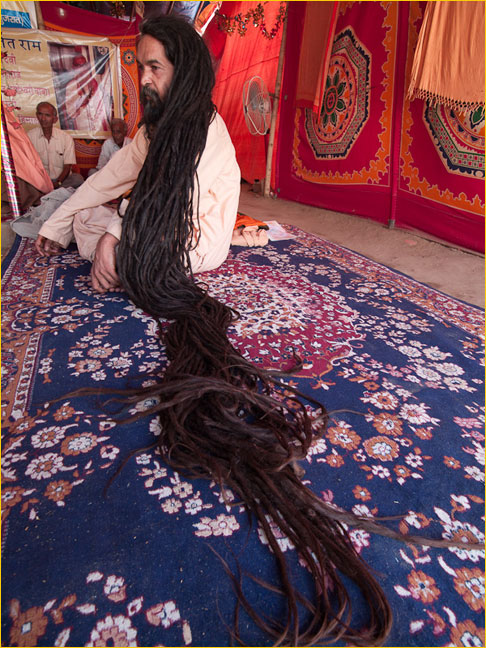
Sadhu India
Some of the intinerent holy men never cut their hair or hold an arm aloft for decades

Haridwar Street
Parades honoring holy men or sects break out on the streets of Haridwar

Kumbh Mela, Haridwar
A ritual gathering near the end of Kumbh Mela
I attended another Hindu event in Singapore, Thaipusam, where the celebrants walk for miles carrying highly decorated wire “floats” supported by hooks piercing the skin. What Thaipusam lacked sheer numbers, it made up for in decibels. Time and again I couldn’t catch up with the action. Those losses hurt, but I prefer a few extraordinary images to a slew of lesser shots.
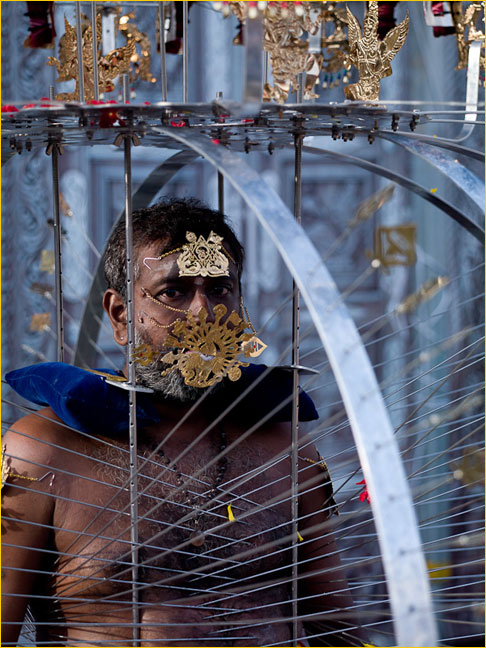
Thaipusam, Singapore
Carrying akavadiat Thaipusam
Pushing the limits of medium format forced me to think ahead, to anticipate where action would occur. Paradoxically, I abandoned autofocus when the subjects moved too fast. I practiced setting up at high speed to capture a fleeting moment and tore down even faster to rush to the next opportunity. For street photography, instead of snapping surreptitiously, I commandeered someone’s time, stood unmoving for so long they forgot about the tall guy with the tripod, or endured the jostle and press of the throngs long enough to capture a few moments.
I don’t want to over sell the opportunities. There are times when the returns diminish to the vanishing point. Try to photograph a gazelle with a super telephoto, two tripods, and mirror lock up, and you will quickly exhaust your store of oaths and imprecations as your compatriots fill their cards with crisp images. After dusk, medium format street shooters hit the bars, but not to photograph unless they crave blurs and noise. Nothing does everything well.
After coming to grips with issues great and small confronting medium format, I can’t go back to small sensors when medium format will do. When I zoom into an image and it holds together at each step, there’s a thrill I can’t relinquish.
October, 2010
James Martin will lead a tour of Burma and Cambodia in November, 2011 with Joseph Van Os Photo Safaris.
Participants will be able to try several medium format cameras.
Seewww.digitalmediumformat.com orwww.photosafaris.comfor more information.
Read this story and all the best stories on The Luminous Landscape
The author has made this story available to Luminous Landscape members only. Upgrade to get instant access to this story and other benefits available only to members.
Why choose us?
Luminous-Landscape is a membership site. Our website contains over 5300 articles on almost every topic, camera, lens and printer you can imagine. Our membership model is simple, just $2 a month ($24.00 USD a year). This $24 gains you access to a wealth of information including all our past and future video tutorials on such topics as Lightroom, Capture One, Printing, file management and dozens of interviews and travel videos.
- New Articles every few days
- All original content found nowhere else on the web
- No Pop Up Google Sense ads – Our advertisers are photo related
- Download/stream video to any device
- NEW videos monthly
- Top well-known photographer contributors
- Posts from industry leaders
- Speciality Photography Workshops
- Mobile device scalable
- Exclusive video interviews
- Special vendor offers for members
- Hands On Product reviews
- FREE – User Forum. One of the most read user forums on the internet
- Access to our community Buy and Sell pages; for members only.





